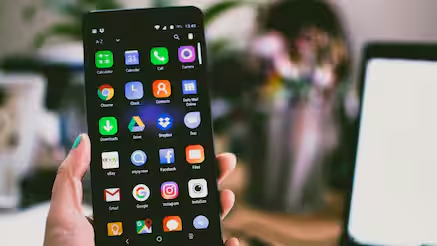Personalizing a smartphone turns a busy tool into something that fits the day, not the other way around. Small tweaks, clean folders, a calm wallpaper, and smarter notifications, cut friction, so swipes feel quick. When the right apps sit up front and widgets show what matters, tasks shrink to a tap.
If choosing a direction feels tricky, start by noticing what you do most; that simple audit points to the first change worth making. Read more is a friendly cue that leads to clear examples and fresh ideas for getting started. After that nudge, pick one improvement with a visible payoff: group work apps, add a weather tile, or turn on dark mode. Test the layout for a day, then adjust anything that feels noisy or slow. Mute non-essential alerts, keep the screen tidy, and let a few well-chosen tools do the heavy lifting so the phone becomes calm, fast, and yours.
Home Screen Set-Up
A Clean Home screen will help you work with your phone easily. Organizing into folders, such as Work or Fun, helps to leave everything tidy. As an example, placing messaging apps in a single folder saves swiping time. Having preferred applications such as a music player in the forefront accelerates access.
An alternate layout, such as fewer rows of application, provides a clean look. Testing the arrangement a day later will make sure it is practical and simple to explore.
Selecting an amusing Theme or Wallpaper
The style of a phone picks the tone. Personalizing a wallpaper involves selecting a wallpaper, such as a sunset photo or a favorite pet. Lots of phones have coordinated color and icon themes, e.g. a dark and stylish mode or a sunny palette. As an example, green color with a nature theme may seem soothing.
The ideas pop up as one goes through the theme store of the phone, or online in search of free wallpapers. A few options will allow testing a new and entertaining experience.
Some ideas for themes and wallpapers include:
- Pick a photo from a favorite trip.
- Try a dark mode for easy viewing.
- Use a theme with matching icons.
- Swap wallpapers weekly for variety.
The Handy Widgets addition
Widgets save time by not having to go to the info. The weather widget gives a glance of the weather forecast, and the calendar-type widget gives a view of the plan of events. As an example, with a to-do list widget, there will be no need to open an app to have tasks in the limelight.
Bulky experiments with the size of a widget, such as a mini timer or a large-scale music player, are useful to explore. Having a few widgets makes the screen uncluttered.
App Suitability
Useful apps increase the utility of a phone. A note-taking app, such as Google Keep, organizes thoughts in a different way, and a piece of fitness hardware records the number of steps a person takes each day. It seems intimate when choosing apps that fit into everyday routines, such as a podcast app when you have to commute. An example can be a meditation application that may bring serenity to hectic days.
It is possible to find the so-called gems by checking the app stores with the top-rated tools or asking your friends. It is made simple by starting with one or two new apps.
Some app personalization tips include:
- Choose apps for daily tasks, like notes.
- Try a fitness or meditation app.
- Pick tools with simple, clear designs.
- Test apps for a week before keeping.
Configuration of Notifications
Intelligent notification chops up distractions. Shutting down notifications on apps not used as often, such as games, will silence the phone. For example, this means leaving notifications on when a message comes in, but off when a social media notification comes. Converting alerts into a summary, if the phone supports this feature, minimizes frequent pinging.
This can be done by weekly checking of notification settings to reflect on-going needs. Modifying alerts of a given app at a time prevents the risk of important updates.
What to Test and Tweak over Setup
Customization of a phone is trial and error. A day using the new arrangement, similar to trying out a new gadget, will reveal what is happening. When it seems wrong, say a littered screen, dragging an application, or making a new wallpaper corrects the situation in a minute.
Sharing the setup with a friend can present new ideologies. Tweaking in small ways, such as icon style, maintains the phone’s feeling new without doing a huge redesign.
Dealing with customization snags
Personalization has a hitch sometimes, such as a sluggish phone or a complex app. It is good to begin with something small, such as a single new widget. In case of lags in the phone, deleting the unused programs clears space. Setting up problems can be quickly solved by checking online forums or tutorials.
It is common to concentrate on getting the ideal appearance. It has to be fun, so engaging in minor changes, such as a new wallpaper, is permissible. One change is used as the seed of more to come.
Personalization of the Phone
Customizing a smartphone makes it a fitting instrument. One can assemble a joy-inducing device with the help of arranging the home screen, selecting entertaining themes, and smart apps by anyone. It is easy since there are testing setups, and the notification is managed. By practicing a little, you can make a customized phone a simple method of making day-to-day activities less time-consuming, enjoyable, and completely your own.






